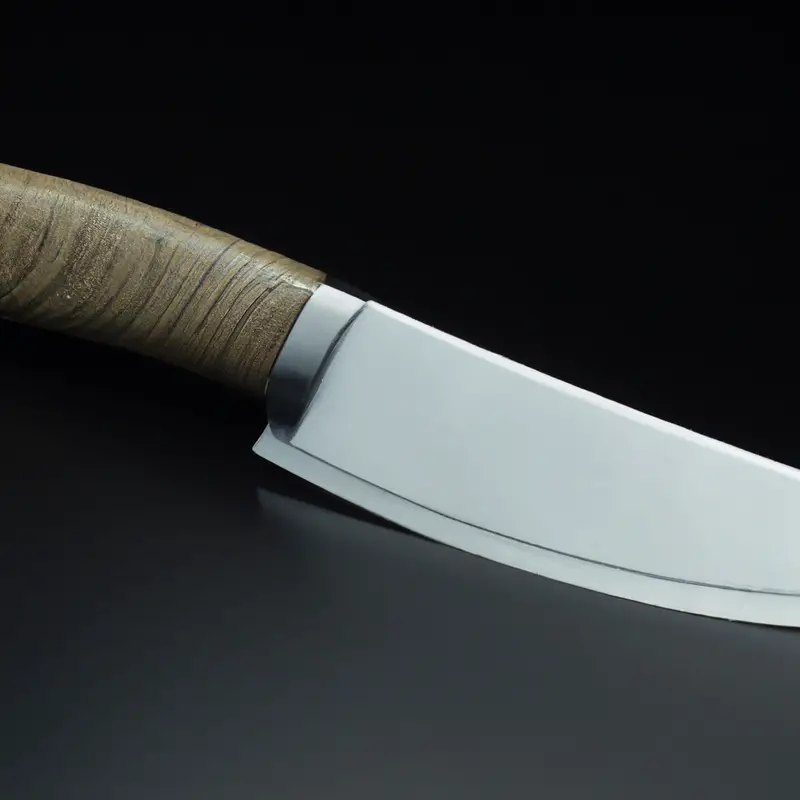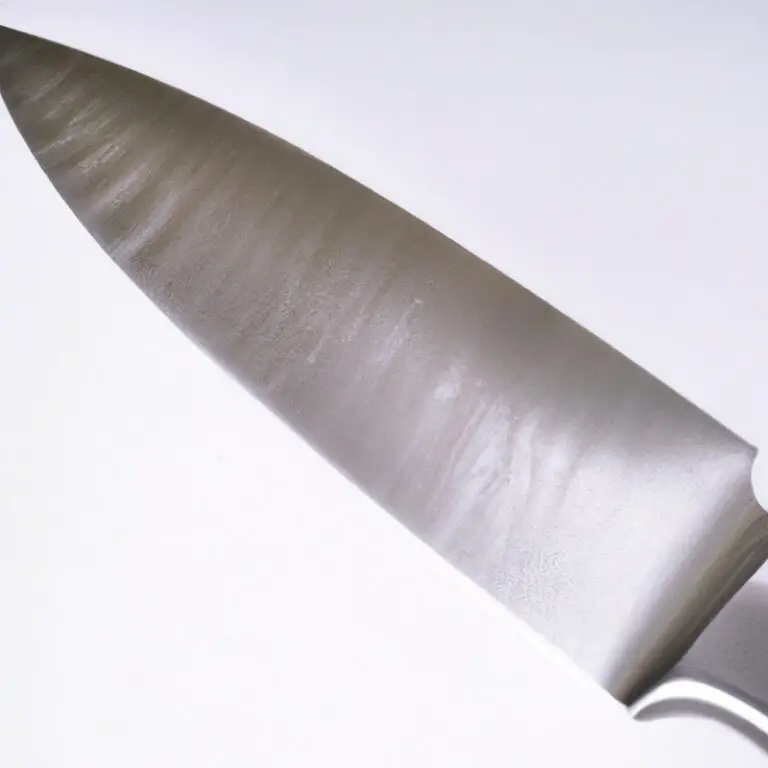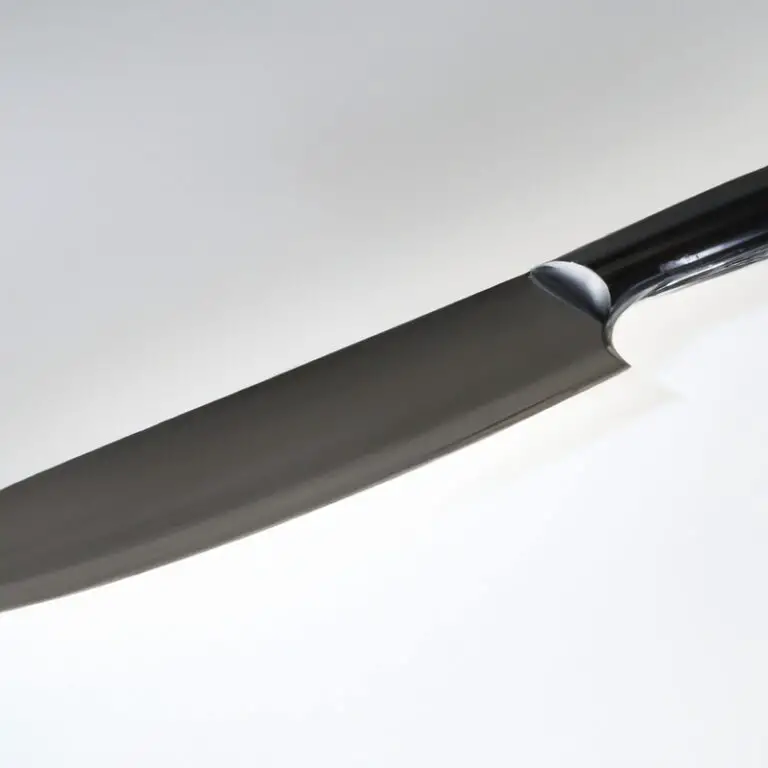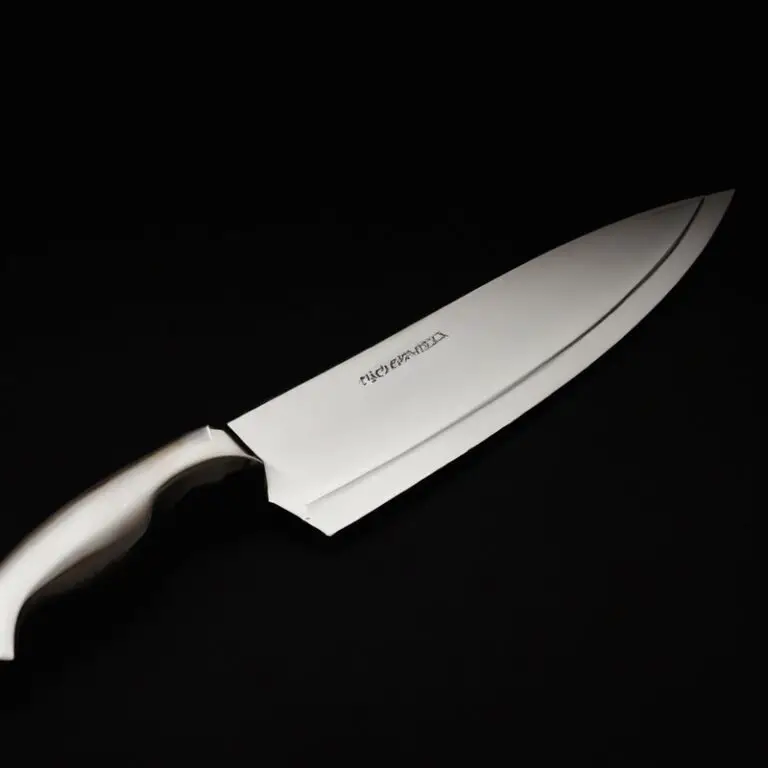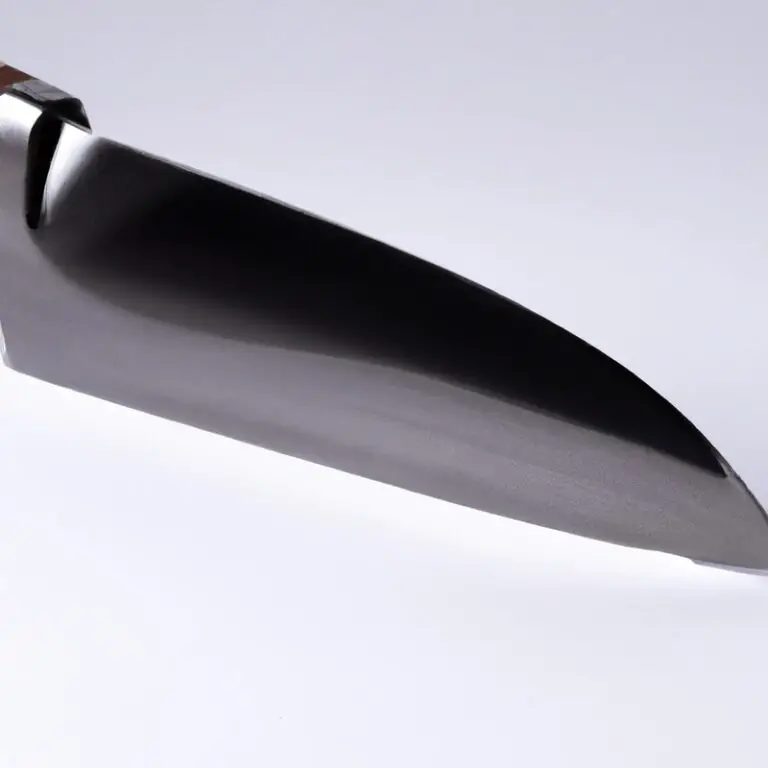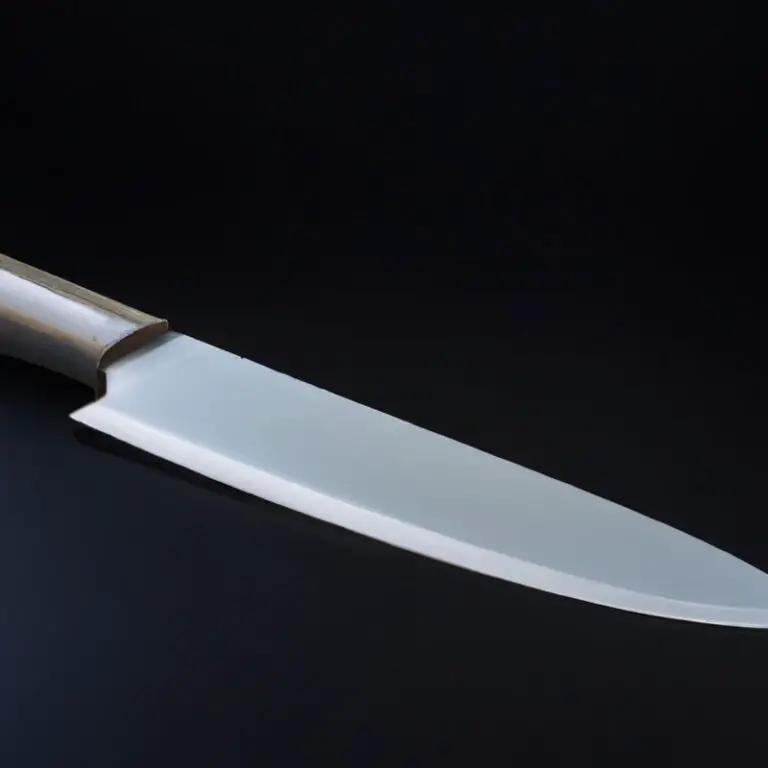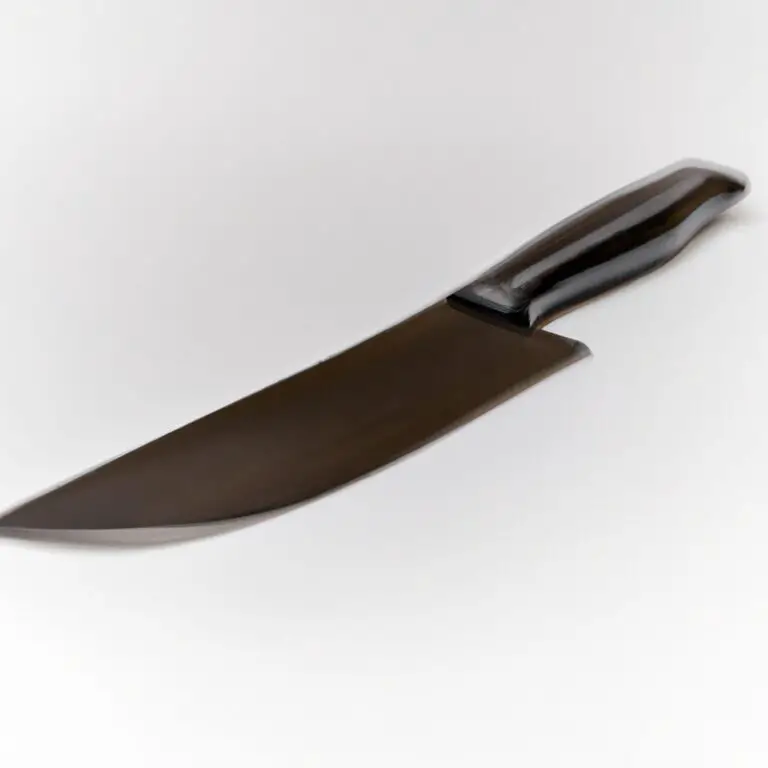What Are The Common Uses For a Santoku Knife? Slice With Precision
Key Takeaways:
- The Santoku knife is a versatile kitchen tool that can be used for a variety of tasks, such as slicing, dicing, and chopping.
- Its unique design and sharp blade make it especially effective for cutting through vegetables, fruits, and boneless meats.
- When using a Santoku knife, it’s important to use proper technique and keep the blade sharp to ensure optimal performance.
- Whether you’re a professional chef or a home cook, a high-quality Santoku knife is a valuable addition to your kitchen arsenal.
If you are a seasoned cook or an aspiring chef, you must have heard about Santoku knives. But did you know why they are making a buzz in the kitchen cutlery world?
For those unfamiliar, a Santoku knife is a Japanese all-purpose knife known for its sharpness, balance, and versatility.
It is a go-to tool for many culinary enthusiasts worldwide. In this comprehensive guide, we’ll explore the common uses of a Santoku knife, its unique features, techniques to handle it with precision, and why it is a must-have tool in your kitchen.
Let’s dive right in!
| Santoku Knife Uses |
|---|
| Slicing: the Santoku knife is perfect for slicing meats, fish, and vegetables thinly and evenly. |
| Dicing and chopping: With its wide blade and relatively flat profile, the Santoku knife is perfect for chopping vegetables and fruit into more accurate sizes. |
| Mincing: thanks to its angled blade, the Santoku knife is perfect for mincing herbs, garlic, and ginger to the finest of sizes. |
| Carving: the Santoku knife’s sharp pointed end makes it perfect for carving meat and poultry. |
| Cleaning and Filleting: a lot of Santoku knives are specifically designed with a flat edge that can help in cleaning and even filleting fish. |
| General kitchen use: the Santoku knife’s versatility makes it great for everyday kitchen tasks like slicing, chopping, and dicing of almost any food item. |
Understanding Santoku Knives: A Comprehensive Guide
Understanding Santoku Knives: A Comprehensive Guide Santoku knives are a type of Japanese kitchen knife that has become increasingly popular in Western cuisine. Unlike the western chef’s knife, which has a pointed tip and a full tang, Santoku knives have a curved blade with a straighter edge, and a shorter tang.
Santoku knives are versatile and can be used for a variety of tasks in the kitchen.
Some common uses of a Santoku knife include:
- Slicing, dicing, and chopping vegetables: The curved blade of a Santoku knife allows for a rocking motion that makes quick work of chopping, while the straighter edge makes it ideal for slicing and dicing.
- Cutting meat and fish: A Santoku knife’s sharp edge and thinner blade make it easy to cut through meat and fish with precision.
- Slicing sushi: The straighter edge of a Santoku knife makes it ideal for slicing sushi and sashimi.
To get the most out of your Santoku knife, it’s important to look for certain features like a high-quality stainless steel or carbon steel blade, a comfortable handle, and a sturdy construction. Additionally, maintaining your Santoku knife’s sharpness through regular sharpening and proper storage will ensure optimal performance and longevity.
How Santoku Knives Differ from Other Kitchen Knives
Santoku knives differ from other kitchen knives in several ways. Firstly, Santoku knives have a shorter and wider blade than Western-style knives, making them ideal for chopping vegetables, herbs, and fruits.
Secondly, their thinner blade allows for precise cuts and smooth slicing of meats and fish.
The flat edge of the Santoku knife is perfect for tapping ingredients off the blade after cutting. Finally, the tip of a Santoku knife is slightly curved, making it an excellent tool for slicing meats and other foods.
Compared to other kitchen knives, Santoku knives are versatile and user-friendly, making them a popular choice among professional and home cooks alike.
The Anatomy of A Santoku Knife: Blade, Handle, and Tang
A Santoku knife typically features a blade between 5 and 8 inches long, with a straight edge and a sheep’s foot tip. The blade is made of high-carbon stainless steel or Damascus steel, which is durable and corrosion-resistant.
The handle of a Santoku knife is ergonomic and designed to provide a comfortable grip.
It is typically made of materials such as wood, plastic, or composite materials. The tang of a Santoku knife extends the full length of the handle, providing balance and stability during use.
The design of the Santoku knife is intended to facilitate a range of kitchen tasks, from chopping and slicing to dicing.
The blade’s flat edge makes it well-suited for chopping vegetables and herbs, while the sheep’s foot tip allows for precision slices and cuts. The ergonomic handle helps reduce wrist fatigue during extended use.
When purchasing a Santoku knife, it’s important to consider the construction and materials of both the blade and handle.
A high-quality Santoku knife should feature a sturdy tang and a sharp, durable blade. Additionally, choosing a handle material that feels comfortable in your hand is key to finding a Santoku knife that will be a pleasure to use in the kitchen.
What Makes A Great Santoku Knife: Key Features to Look For
A great Santoku knife should have a razor-sharp blade made of high-quality steel, usually between 5-8 inches in length. Look for a blade that is thin and lightweight, with a straight edge that stays sharp after repeated use.
A sturdy and ergonomic handle that provides a comfortable and secure grip is also essential.
Ideally, the blade should extend all the way through the handle, known as a full tang, for maximum balance and strength. Additionally, the knife should have a good heel that allows for easy rock chopping and a slightly curved belly for smooth slicing.
A great Santoku knife should also be versatile enough to handle both meat and vegetables, making it an all-purpose kitchen tool.
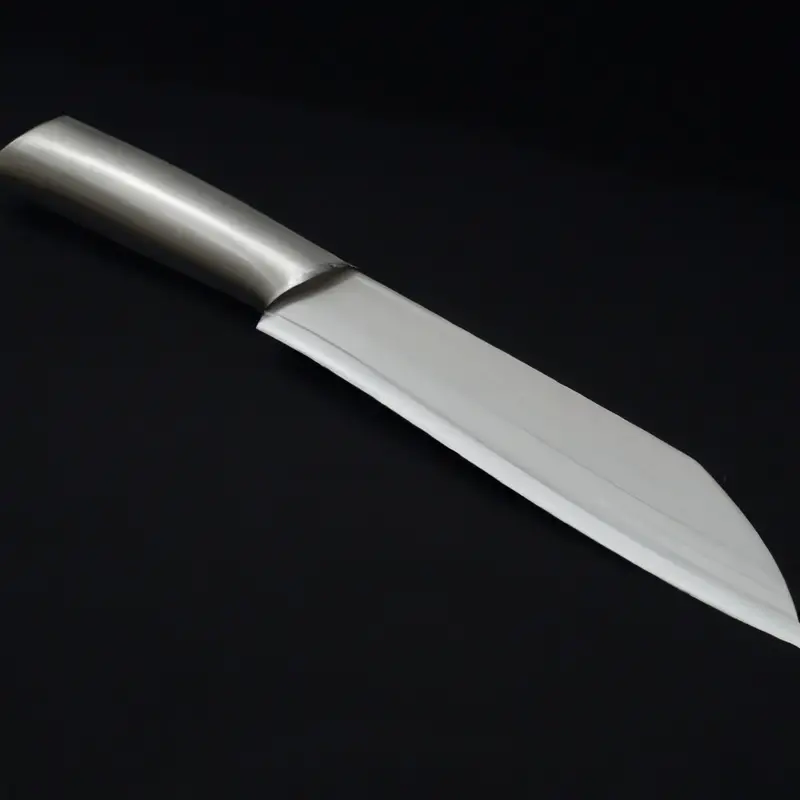
Cutting Vegetables with A Santoku Knife: Tips and Techniques
Cutting vegetables with a Santoku knife is easy and efficient if you follow these tips and techniques:
- Choose the right Santoku knife: Look for a knife that fits comfortably in your hand and has a sharp blade.
- Keep the blade sharp: A dull blade will make cutting harder and increase the risk of injury.
- Use a cutting board: It protects your countertops and keeps your knife sharp.
- Hold the knife properly: Use a pinch grip to hold the handle and rest your index finger on the blade for stability.
- Cut with a slicing motion: Keep the tip of the blade on the cutting board and use a back-and-forth motion to slice through the vegetable.
- Use a rocking motion: For tougher vegetables, use a gentle rocking motion with the blade to apply pressure and make clean cuts.
By following these tips and techniques, you’ll be able to cut vegetables efficiently and safely with your Santoku knife.
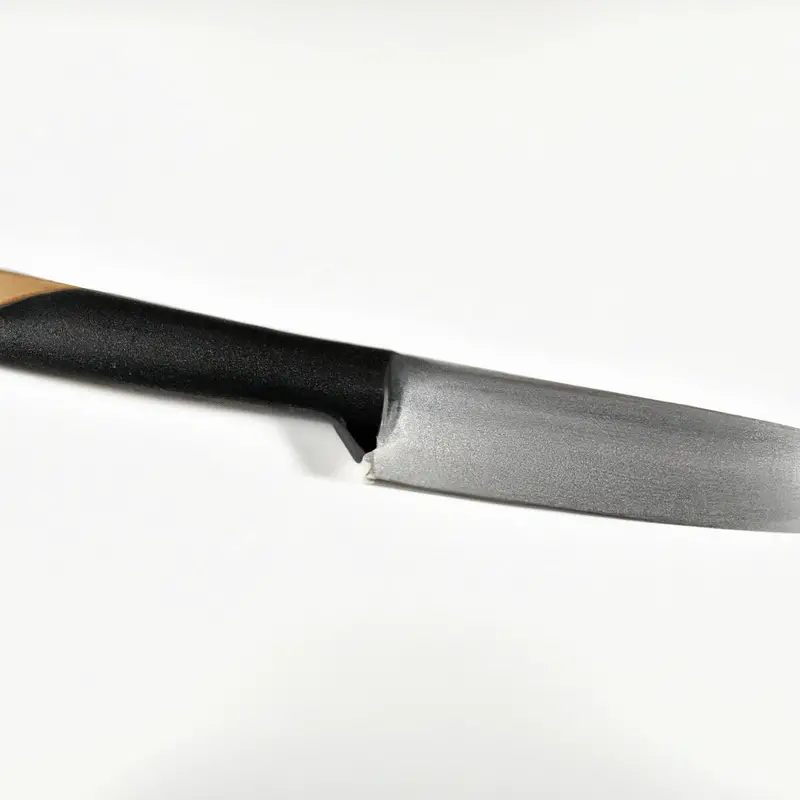
The Benefits of Using A Santoku Knife for Meat and Fish
Using a Santoku knife for meat and fish offers a variety of benefits. The flat edge of the blade allows for precise cuts and helps prevent shredding or tearing of the meat or fish.
The Granton edge, which has small divots on the side of the blade, creates air pockets that prevent food from sticking to the blade.
This makes slicing through meat and fish smoother and more efficient. The sharp point of the knife makes it easy to pierce through skin and bones.
The ergonomic handle provides a comfortable grip, reducing hand fatigue during prolonged use.
Overall, a Santoku knife is a reliable and versatile kitchen tool for preparing meat and fish.
Santoku Knives for Sushi: A Specialized Blade for Slicing Raw Fish
Santoku knives are not only versatile but specialized blades that can be used for a multitude of tasks in the kitchen. One popular use of Santoku knives is for slicing raw fish for sushi.
The wide and flat blade of the Santoku knife allows for precision slicing without damaging the delicate flesh of the fish.
The unique shape of the blade also makes it easier to slice through the sushi roll without crushing it. When selecting a Santoku knife for sushi, look for a sharp and high-quality blade made of high-carbon stainless steel that has a comfortable handle for optimal control.
With a Santoku knife, you can enhance your sushi-making experience and achieve professional-looking results.
Sharpening Your Santoku Knife: Tools and Tactics for Optimal Performance
Sharpening your Santoku knife is crucial to ensure optimal performance while cutting through foods. Here are some tools and tactics to keep your Santoku knife in top condition:
- Sharpening Stone: Use a sharpening stone to sharpen the blade of your Santoku knife. It’s an essential tool that can either be made from natural or synthetic materials.
- Honing Steel: A honing steel is used to realign the edge of your Santoku knife. It doesn’t sharpen the blade but helps to maintain its sharpness.
- Angle Guides: Angle guides ensure that you sharpen your knife at the right angle. The ideal angle for a Santoku knife is around 15-20 degrees.
- Patience: Take your time while sharpening your Santoku knife. Rushing through the process can damage the blade, making it harder to use.
- Proper Technique: Use the right technique while sharpening to ensure the blade is evenly sharpened. Work on the blade edge from the base to the tip, maintaining a consistent angle.
Keeping your Santoku knife sharp is crucial for optimal performance while cutting food. Follow these tips to maintain a sharp and effective Santoku knife.
Maintenance and Care: Keeping Your Santoku Knife in Top Condition
To keep your Santoku knife in top condition, it’s essential to follow proper maintenance and care practices. Here are some tips to help you maintain your Santoku knife:
- Hand washing: Always wash your knife by hand with warm water and mild soap.
- Drying: Dry the knife thoroughly after cleaning to prevent rusting.
- Storage: Store the knife in a knife block or sheath to prevent contact with other utensils.
- Sharpening: Regularly sharpen the knife using a sharpening stone or honing rod to maintain its sharpness.
- Cutting surface: Use a cutting board made of soft materials like wood or plastic to prevent damage to the knife blade.
By following these simple tips, you can ensure that your Santoku knife remains sharp and efficient for longer periods, providing you with the best results every time you use it.
The Historical Context of Santoku Knives: Japan’s Culinary Heritage
The Santoku knife originates from Japan and has a rich cultural history closely tied to Japanese cuisine. The word ‘Santoku’ means ‘three virtues’ in Japanese – referring to the three main tasks it excels in; slicing, dicing and mincing.
It was originally designed to meet the needs of home cooks who wanted a versatile kitchen knife that could handle multiple tasks.
The Santoku knife is believed to have been developed in the 1940s and was first introduced to the Western market in the early 1980s. Today, it is one of the most popular kitchen knives in the world, prized for its precision, versatility, and beauty.
The Santoku knife’s historical context is tied to the rich and ancient culinary heritage of Japan, where the art of knife-making has been perfected over centuries, and where food is revered as an essential part of daily life.
The Future of Santoku Knives: Innovations and Trends in Kitchen Cutlery
In recent years, there has been a surge in demand for high-quality Santoku knives. As a result, manufacturers have been exploring innovative designs and materials to enhance the performance and overall functionality of these knives.
One notable trend in kitchen cutlery is the use of higher quality steels, resulting in sharper and more durable blades.
Some manufacturers are also incorporating ergonomic handles, reducing strain on the user’s hand during prolonged use. Expect to see the introduction of more specialized Santoku knives, such as those designed specifically for cutting meat or fish.
Additionally, technological advancements may also lead to the introduction of Santoku knives with smart features, further revolutionizing the culinary experience.
As the popularity of Japanese cuisine continues to grow globally, the demand for high-quality Santoku knives is only expected to increase.
Building A Killer Knife Collection: Why A Santoku Knife is a Must-Have
A Santoku knife is a must-have in any knife collection due to its versatility and functionality. Its unique design allows for swift and efficient slicing, dicing, and chopping of vegetables, meat, and fish.
With a Santoku knife, you can effortlessly create precision cuts for your recipes.
Compared to other kitchen knives, a Santoku knife has a shorter blade that is wider and heavier, making it more suitable for chopping. Its granton edge, or the series of dimples on the blade, prevents food from sticking to the knife, allowing for a seamless and efficient cutting process.
Investing in a high-quality Santoku knife can significantly enhance your cooking experience, making it easier and more enjoyable.
Whether you are a professional chef or a home cook, having a Santoku knife in your collection can make a drastic difference in your kitchen performance.
Final Verdict
It’s clear that a Santoku knife is an essential tool in any kitchen. Its versatility, ease of use and precise cutting capabilities make it a popular choice among home cooks and professional chefs alike.
From slicing vegetables to preparing meat and even sushi, a Santoku knife can handle a variety of tasks with ease.
As with any high-quality tool, proper care and maintenance are crucial for optimal performance and longevity. By investing in a reliable Santoku knife and following the proper techniques and methods for usage, you can elevate your cooking skills and take your culinary creations to the next level.
Trust in the expertise and knowledge provided in this guide, and make the Santoku knife a must-have in your kitchen arsenal.

